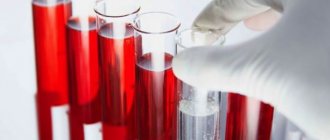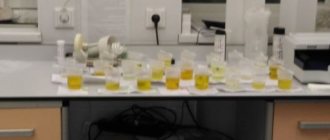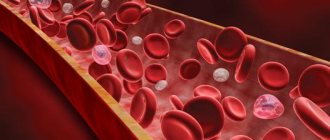How to prepare for the analysis?
A couple of days before the scheduled test, you should reduce the consumption of foods that contain serotonin and other amine compounds. Prohibited foods and drinks before testing include:
- all types of cheese;
- exotic plant products (pineapples, bananas and others);
- types of legumes;
- nuts.
An exception applies to alcoholic beverages and nicotine components (smoking is prohibited for about 3-4 hours before delivery). Due to the nature of the analysis of the delivery of material several times a day, it is recommended to completely quit smoking during the entire examination. It is recommended to stay in a warm place for 24 hours before collecting urine, avoiding hypothermia. Drink filtered still water throughout the day, monitor your emotional background and do not exert yourself physically. You should stop having intimate relationships and taking any medications a couple of days before the laboratory test (taking vital medications should be discussed with your doctor) and vitamin supplements.
Survey results
Laboratory research is analyzed according to several indicators. Due to the breakdown of the main substance, the microelements adrenaline, norepinephrine and dopamine are released in the urine. Each indicator is characterized by certain norms of values, depending on the patient’s age (children’s and adult criteria for indicators are different).
Increasing values
An increase in norepinephrine, adrenaline and dopamine in urine analysis may indicate the development of hypertension, bronchial asthma, angina pectoris, various pathologies in the renal organs, abnormal processes in the nervous system, heart attack, stroke, peptic ulcer in the gastrointestinal tract, head injuries, diabetes, various tumor formations. Excessive physical activity and stressful situations can trigger hormonal overshoot in the body.
Lowering values
A decrease in the values of norepinephrine, adrenaline and dopamine in the examination may indicate leukemia, renal failure and pathological processes in the adrenal glands. An analysis for catecholamines does not accurately indicate the presence of ailments. To diagnose pathologies, you should undergo a full examination. Failure to properly collect urine can increase the level of adrenaline and norepinephrine, which will distort the result of the analysis. It should be remembered that only with the help of a specialist can you obtain an accurate and detailed assessment of the results obtained during the study.
general information
Catecholamines - what are they? These are several hormones that are produced in the adrenal gland, its medulla and enter the bloodstream as a response to an emotional or physical stressful situation. Further, these active substances take part in the transmission of nerve impulses to the brain and provoke:
- release of energy sources, which are fatty acids and glucose;
- dilation of pupils and bronchioles.
Norepinephrine directly increases blood pressure by constricting blood vessels. Adrenaline acts as a metabolic stimulant and increases heart rate. After the hormonal substances have completed their work, they disintegrate and are excreted from the body along with urine. Thus, the functions of catecholamines are that they provoke the endocrine glands to work actively, and also help stimulate the pituitary gland and hypothalamus. Normally, catecholamines and their metabolites are contained in small quantities. However, under stress, their concentration increases for some time. In some pathological conditions (chromaffin tumors, neuroendocrine tumors), a huge amount of these active substances is formed. Tests can detect them in blood and urine. In this case, the following symptoms appear:
- increased blood pressure for a short or long period;
- very severe headaches;
- trembling in the body;
- increased sweating;
- prolonged anxiety;
- nausea;
- slight tingling in the limbs.
Surgery aimed at removing it is considered an effective method of treating tumors. As a result, catecholamine levels decrease and symptoms decrease or disappear.
Daily urine for analysis
Urinalysis for catecholamines mainly involves collecting 24-hour urine (collecting all urine fluid over a 24-hour period). The collected material requires a specialized sterile container (sold in a pharmacy) or a collection tank can be given to the laboratory along with a special preservative to be added to urine to avoid decomposition of components important for the study. After each set of material, the container should be tightly closed and placed in the refrigerator for storage.
Before urinating to collect the test urine, hygienic procedures of the genital organs should be carried out. It is recommended to shave the hair to prevent foreign particles from getting into the urine. On the reservoir with the collected urine, you should write the exact hours of the first and last emptying of the bladder, and write down the personal data of the person taking the test.
J.W.H. Action
JWH has a pronounced psychoactive effect on the central nervous system, irritating brain receptors. Drug abuse leads to complete degradation of the personality and changes in its psychosomatics. The use of the drug is more often observed among young people due to its availability and mass distribution, while the unformed body is more susceptible to the development of drug addiction.
JWH components penetrate the systemic bloodstream, easily overcome the blood-brain barrier and have a destructive effect on the body as a whole. In terms of the strength of its narcotic and toxic effects, JWH is not inferior to most narcotic drugs, often demonstrating more pronounced side effects.
Many people consider this drug to be relatively harmless, but quickly become extremely addicted. Intoxication with a narcotic substance causes irreversible harm to health, primarily by damaging brain tissue - in individuals who abuse JWH, up to 50% of nerve cell death, decreased intelligence, convulsions, and behavioral disorders leading to schizophrenia and suicide attempts are recorded.
First study shows links
ICL scientists and their collaborators—from Northwestern University in Chicago, Illinois, the University of Illinois at Chicago, and Murdoch University in Australia—created the first of two studies. It appeared in Nature Food magazine.
Metabolites are molecules that the body produces during cellular metabolism, and some of them may be measurable in human urine.
Working with 1,848 study participants in the United States, the researchers were able to identify associations between 46 different metabolites and food types.
Co-author Paul Elliott, Department of Epidemiology and Public Health Medicine at ICL, explains:
“By carefully measuring people's diets and collecting their urine over two 24-hour periods, we were able to establish a link between food intake and the production of metabolites in urine, which could help improve understanding of how our diet affects health. "Healthy diets have different urinary metabolite patterns than those associated with poorer health outcomes."
Metabolites have been associated with consumption of alcohol, citrus fruits, fructose (fruit sugar), glucose, red meat and other animal proteins such as chicken. Nutrients including vitamin C and calcium were also associated with metabolites in the study.
The association of metabolites with health outcomes also became apparent in their data. For example, scientists found that formate and sodium metabolites were associated with obesity and high blood pressure.










